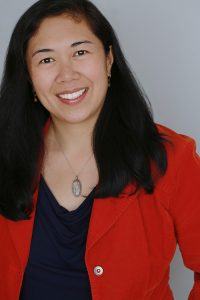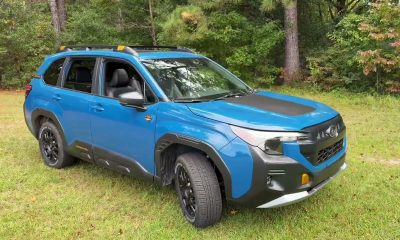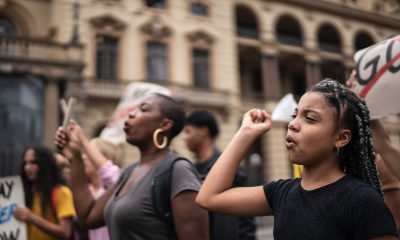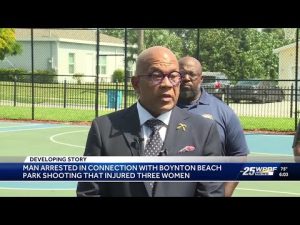Bay Area
Opinion: Racist Harassment of Asian Health Care Workers Won’t Cure Coronavirus

On his way to work, a doctor was told to “go back to f—— China.” An Asian nurse delivering medicine to a sick patient was spat on. And parents at a children’s hospital refused care from health care staff with “Asian appearances.”
Violent hate crimes against Asian Americans have surged across the United States recently due to xenophobic perceptions that all Asian people are carriers of COVID-19. But some forms of harassment have been directed specifically at the Asian physicians and nurses risking their own health and safety to battle the spread of the virus in hospitals across the country.
“It’s really heartbreaking,” said UC Berkeley ethnic studies professor Catherine Ceniza Choy. “These health workers are parents, they’re daughters and sons. They are sisters and brothers. They’re our neighbors. … This is an additional level of trauma, anxiety and stress that we don’t need to place on them.”

UC Berkeley ethnic studies professor Catherine Ceniza Choy is also the author of Empire of Care: Nursing and Migration in Filipino American History. (Photo courtesy of Kirsten Lara Getchell).
Catherine Ceniza Choy, UC Berkeley ethnic studies professor.
UC Berkeley ethnic studies professor Catherine Ceniza Choy is also the author of Empire of Care: Nursing and Migration in Filipino American History. (Photo courtesy of Kirsten Lara Getchell)
Choy has taught at Berkeley since 2004 and has long studied Asian American history and ethnic studies. Some of her research has focused on the reasons why Asian countries, most notably the Philippines, have become the leading exporters of nurses to the United States.
According to the Pew Research Center, the Asian population in the U.S. is the fastest-growing ethnic group in the country. Some of that growth comes from Asian-born health care workers that migrate here. A Thomson Reuters report found that, of health care professionals surveyed in the United States, 17% were foreign-born, and Asian-born staff made up the most.
In California alone, 25% of active registered nurses are either Asian-born or Asian American, according to research from the Healthforce Center at UCSF.
Despite having so many Asian health care workers on the front lines combating COVID-19, the history of associating Asians as disease carriers is repeating itself, said Choy.
“There’s a longer history of blaming Asia and Asian migrants and, by extension, Asian Americans for outbreaks of disease,” she said. “COVID-19 is just the most current example of this history.”
Choy talked with Berkeley News about that history and the reasons xenophobia can halt collective attempts to stop the spread of the coronavirus.
Berkeley News: What has the experience been like for Asian health workers amidst this pandemic?
Cathy Ceniza Choy: We’re seeing reports of how stressed health workers are because of the incredible numbers of patients coming in with symptoms of COVID-19, and because they don’t have the personal protective equipment to protect themselves from the virus.
They have to go home to their families, and they don’t want to expose them, so many of them are isolating themselves away from their family members. It’s so heartbreaking. Many of them are also Asian migrants or Asian American.
Historically, the U.S. has been the leading recipient of over 150,000 Filipino nurse migrants who have come to this country to work in hospitals that are often serving the most underserved populations, in inner-city hospitals, as well as rural areas.
They are also currently on the front lines of fighting this pandemic.
So, we need to be very careful not to blame these health workers for this disease, because, in addition to being human beings, they are taking care of our parents, our siblings, our spouses. They might be taking care of you, and they don’t need that added stress while trying to save lives.
For most of us right now, in terms of honoring the shelter-in-place orders, we’re able to do that because there are health workers like Filipino nurses, and Asian Indian immigrant physicians, who comprise the largest number of foreign-trained physicians in the U.S.
We can be with our families because they are doing what they do.
What is the history of blaming Asians for the spread of disease, and how does that history relate to today?
Tragically, there is a longer history of this association between Asians as disease carriers, and a longer history of blaming Asian and Asian migrants and, by extension, Asian Americans, for outbreaks of disease. COVID-19 is just the most current example of this history.
Chinese Americans and Chinatowns in the U.S. were linked to smallpox outbreaks in the 19th century. In the early 1900s, Japanese arrivals to the U.S. were racially profiled and also targeted for examination because they were associated with the bubonic plague.
This has also impacted Filipinos in the Philippines, which was an official U.S. colony from 1898 to 1946. Health officials would refer to Filipino bodies as ‘incubators of leprosy.’ They used outbreaks of cholera in the Philippines to justify U.S. colonialism, saying that white Americans could bring health in the form of sanitation.
COVID-19, unfortunately, has been called the ‘Chinese virus.’ That is a misnomer because pandemics and diseases see no national borders. They don’t recognize color. They don’t see the ethnic enclave borders of a Chinatown or a Chinese restaurant.
But we know that President Trump and some of our politicians have used that reference in their communication about COVID-19.
As we’ve seen, though, the historical linkage between Asian bodies and disease, and the rise in hate crimes, have impacted all Asians and the Asian diaspora throughout the world — not solely Chinese and Chinese Americans.
Alameda County
Seth Curry Makes Impressive Debut with the Golden State Warriors
Seth looked comfortable in his new uniform, seamlessly fitting into the Warriors’ offensive and defensive system. He finished the night with an impressive 14 points, becoming one of the team’s top scorers for the game. Seth’s points came in a variety of ways – floaters, spot-up three-pointers, mid-range jumpers, and a handful of aggressive drives that kept the Oklahoma City Thunder defense on its heels.

By Y’Anad Burrell
Tuesday night was anything but ordinary for fans in San Francisco as Seth Curry made his highly anticipated debut as a new member of the Golden State Warriors. Seth didn’t disappoint, delivering a performance that not only showcased his scoring ability but also demonstrated his added value to the team.
At 35, the 12-year NBA veteran on Monday signed a contract to play with the Warriors for the rest of the season.
Seth looked comfortable in his new uniform, seamlessly fitting into the Warriors’ offensive and defensive system. He finished the night with an impressive 14 points, becoming one of the team’s top scorers for the game. Seth’s points came in a variety of ways – floaters, spot-up three-pointers, mid-range jumpers, and a handful of aggressive drives that kept the Oklahoma City Thunder defense on its heels.
One of the most memorable moments of the evening came before Seth even scored his first points. As he checked into the game, the Chase Center erupted into applause, with fans rising to their feet to give the newest Warrior a standing ovation.
The crowd’s reaction was a testament not only to Seth’s reputation as a sharpshooter but also to the excitement he brings to the Warriors. It was clear that fans quickly embraced Seth as one of their own, eager to see what he could bring to the team’s championship aspirations.
Warriors’ superstar Steph Curry – Seth’s brother – did not play due to an injury. One could only imagine what it would be like if the Curry brothers were on the court together. Magic in the making.
Seth’s debut proved to be a turning point for the Warriors. Not only did he contribute on the scoreboard, but he also brought a sense of confidence and composure to the floor.
While their loss last night, OKC 124 – GSW 112, Seth’s impact was a game-changer and there’s more yet to come. Beyond statistics, it was clear that Seth’s presence elevated the team’s performance, giving the Warriors a new force as they look to make a deep playoff run.
Activism
Oakland Post: Week of November 26 – December 2, 2025
The printed Weekly Edition of the Oakland Post: Week of November 26 – December 2, 2025

To enlarge your view of this issue, use the slider, magnifying glass icon or full page icon in the lower right corner of the browser window.
Activism
Oakland Post: Week of November 19 – 25, 2025
The printed Weekly Edition of the Oakland Post: Week of November 19 – 25, 2025

To enlarge your view of this issue, use the slider, magnifying glass icon or full page icon in the lower right corner of the browser window.
-

 Activism3 weeks ago
Activism3 weeks agoOakland Post: Week of November 12 – 18, 2025
-

 Activism4 weeks ago
Activism4 weeks agoOakland Post: Week of November 5 – 11, 2025
-

 Activism2 weeks ago
Activism2 weeks agoIN MEMORIAM: William ‘Bill’ Patterson, 94
-

 Activism3 weeks ago
Activism3 weeks agoHow Charles R. Drew University Navigated More Than $20 Million in Fed Cuts – Still Prioritizing Students and Community Health
-

 #NNPA BlackPress3 weeks ago
#NNPA BlackPress3 weeks agoThe Perfumed Hand of Hypocrisy: Trump Hosted Former Terror Suspect While America Condemns a Muslim Mayor
-

 #NNPA BlackPress3 weeks ago
#NNPA BlackPress3 weeks agoProtecting Pedophiles: The GOP’s Warped Crusade Against Its Own Lies
-

 Bay Area3 weeks ago
Bay Area3 weeks agoNo Justice in the Justice System
-

 #NNPA BlackPress4 weeks ago
#NNPA BlackPress4 weeks ago2026 Subaru Forester Wilderness Review: Everyday SUV With Extra Confidence
























































